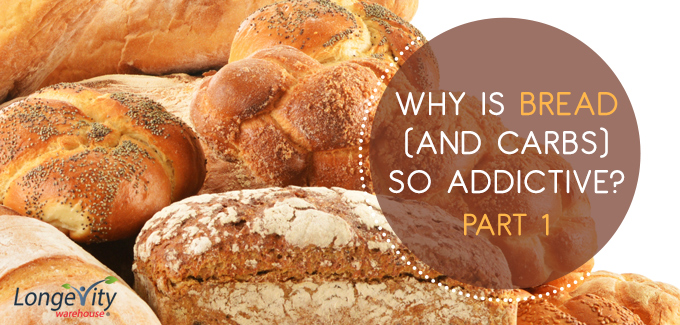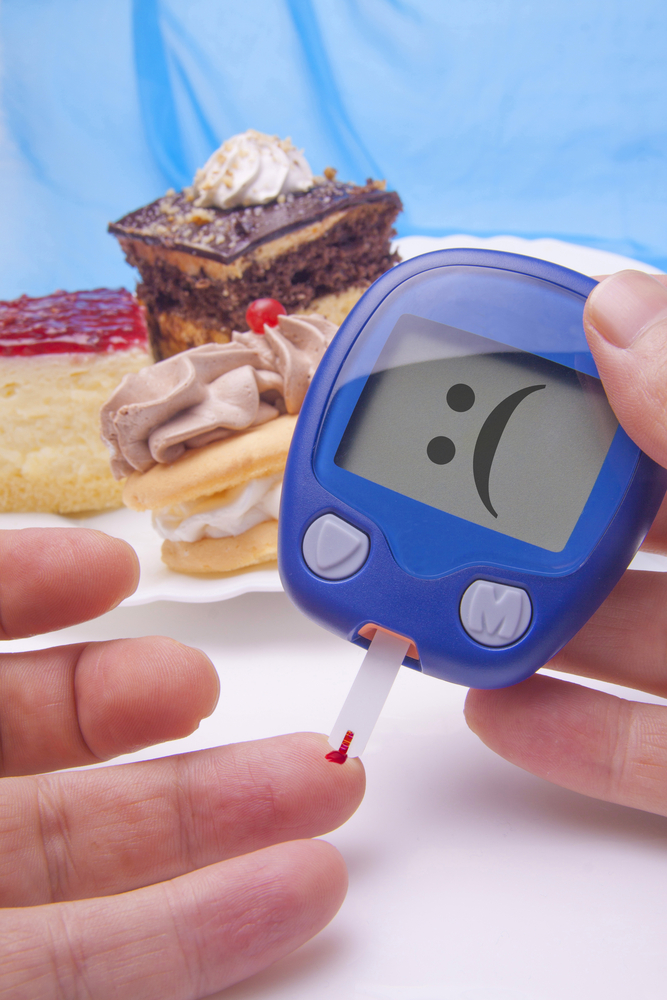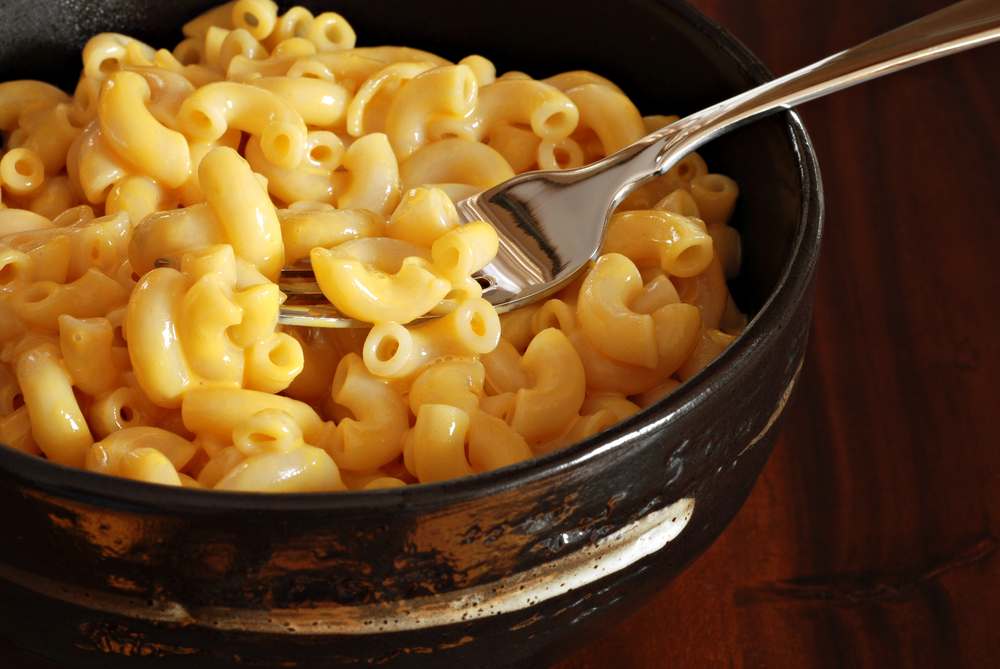
Why is Bread (and Carbs) So Addictive? PART 1
by Colleen Cackowski
Picture this: vast, golden fields of grain, rippling in the wind, under a blue sky… the quintessential image of American heartland. Wheat has been an integral source of nutrition for thousands of years. It helped keep us from starvation and contributed to the growth of many civilizations. However, the current version of wheat isn’t what it used to be, and wheat today, along with other grains, is contributing to an ever increasing epidemic of obesity.
As Dr. William Davis shared with us at a past Longevity Now® Conference, the wheat of our ancestors is incomparable to that which is popularly consumed today. Standing at approximately 18” tall, modern wheat is a dwarf version of the shoulder-high, nutritionally dense wheat of the past. Additionally, most wheat products consumed today are highly refined and potentially rancid.
So why can’t we just stop eating grains and carbs? There are many issues associated with consuming these items from a health perspective, one of which is that they seem to be incredibly addictive. It’s been estimated that up to three-fourths of all overweight people have an addiction to bread and other carbs.
Are you an addict?
Here are some signs you may have a problem with carbs:
* Strong cravings for products such as bread, cookies, pastries, cakes, pasta, etc.
* A feeling of calm and comfort after eating bread products
* A strong compulsion to eat bread products in preference of other foods
* A drive to eat more carb-rich items soon after finishing a meal
The addictive nature of bread and bread products shows up, for example, when we may decide we will avoid bread for a meal and yet find ourselves unable to resist when the bread basket in placed in front of us. Some people can happily be satisfied with one dinner roll while others will find themselves unable to quench their desire for more at every meal and maybe even having sweet snacks in between. Why do some people have such a hard time with bread and carbohydrates?
Here’s What Happens Physically
Bread and many processed foods are refined carbohydrates, and have been stripped down of all the nutrients and fiber. Carbohydrates are basically sugar molecules that are linked together. These types of molecules enter your bloodstream easily. Simple sugars enter the bloodstream quickly, but chains of sugars, like those contained in bread products, give you a MASSIVE sugar hit to your bloodstream, even more quickly than table sugar.
When these chains of carbohydrates break down in your system, there is such a large glucose spike, it triggers your body to protect itself by releasing insulin and getting those sugars o ut of the bloodstream ASAP by storing them as fat. If too much insulin is released to deal with the blood sugar level, then suddenly you can crash and feel the need to eat more bread or carbs to get some “energy” back again. It becomes a vicious cycle leading to insulin resistance where the body stops using insulin properly and glucose becomes trapped in the bloodstream, ultimately resulting in Type 2 diabetes.
ut of the bloodstream ASAP by storing them as fat. If too much insulin is released to deal with the blood sugar level, then suddenly you can crash and feel the need to eat more bread or carbs to get some “energy” back again. It becomes a vicious cycle leading to insulin resistance where the body stops using insulin properly and glucose becomes trapped in the bloodstream, ultimately resulting in Type 2 diabetes.
Satisfying an appetite for sweets and carbs due to this cycle means that your bloodstream will always have sugar available. Insulin always present in the bloodstream is bad news because it leads to insulin resistance. Our body will preferentially utilize sugars as energy when needed, if it is available, and will only turn to fat when no more sugar is available. When we maintain a diet high in carbs, our body starts to lose its capacity to burn fat for fuel. We crave more sugar to replenish the sugar we just stored as fat and over time the body “forgets” that it can burn fat for energy as we just continue to add on the pounds.
Interestingly, you can get the same sugar rush from ‘healthy’, ‘whole grain’ breakfast cereals that you get from candy! Check out this Harvard Health list of 100 common foods and you may be surprised at which items you think are healthy—but are really just sugar bombs.
Emotional Motivations
In addition to the physical effects, there is also a psychological effect of eating bread. Wheat is difficult to digest. It pulls a lot of blood out of circulation and moves it into the digestive tract. The loss of blood dulls the mind, and creates a “food coma” effect. Bread is a “comfort” food because it is associated with a sense of well-being, notwithstanding an absence of sharp mental clarity, that many people choose to experience when they are stressed, bored, or otherwise unhappy.
Sugar also boosts brain tryptophan levels, making us sleepy. This tryptophan boost increases brain serotonin levels over time, which makes us feel satiated and content. Further, the immediate reward of eating carbs is a dopamine rush: the same neurotransmitter behind drug highs like with cocaine and amphetamines. This rush can lead to intrusive thoughts in your head and more cravings when you go too long without a fix.
 The National Institute of Health Researchers found that bread stimulates the brain’s opiate receptors when consumed, eliciting a sense of euphoria. The more we eat it, the more we want to eat. The flavor, texture, and high glycemic content of bread and carbs make it difficult to stop eating once you’ve started. In addition, 40% of people will go through something like an opiate withdrawal when they stop eating these products which can make the “giving up” process somewhat daunting.
The National Institute of Health Researchers found that bread stimulates the brain’s opiate receptors when consumed, eliciting a sense of euphoria. The more we eat it, the more we want to eat. The flavor, texture, and high glycemic content of bread and carbs make it difficult to stop eating once you’ve started. In addition, 40% of people will go through something like an opiate withdrawal when they stop eating these products which can make the “giving up” process somewhat daunting.
Researchers at the University of Bordeaux, France, reported in a 2007 study that when rats were offered a choice between a sugar substitute and intravenous cocaine, 94 percent preferred the calorie-free sweetener sugar substitute. The conclusion was that the intense stimulation of these receptors by sugar-rich diets would generate a similarly intense reward signal in the brain, with the potential to override mechanisms of self-control, and thus to lead to addiction. It does this by triggering the dopamine center— the same neural pathways in the brain that are triggered by cocaine and amphetamines.
Unlike street drugs, these carbs do more than rewire your neurological system. They will short-circuit your body’s systems by reprogramming your metabolism, stockpiling energy as unburnable fat, and causing more cravings which continue the up and down cycle.
Needless to say , eating bread is only a temporary solution to the problem and does not truly satisfy a person’s real underlying needs, either emotionally or nutritionally, and so people become prone to overeating without ever finding true satisfaction from their food.
, eating bread is only a temporary solution to the problem and does not truly satisfy a person’s real underlying needs, either emotionally or nutritionally, and so people become prone to overeating without ever finding true satisfaction from their food.
And, like any other addictive drug, the positive effects of eating carbs diminish over time, while the addiction remains. So we have to eat more and more carbs to achieve the same feeling of well-being in our brain. As we gain weight, we get less and less reward and more and more metabolic problems.
Forty years into our low-fat diet lifestyle where consumption of grains is prevalent, we can see that the fundamental addictiveness of carbs sidesteps our body’s natural defenses against overeating, intensely activates brain pathways for pleasure, and make us simultaneously malnourished and fat. They keep us coming back for more, even as they bring on poor physical health and social rejection.
Read more in PART 2…


Great article on addiction, very clearly understood and written. Part 2 link needs fixed, take out the extra http://www.http://
This is why fasting with ketogenic diet works so well!